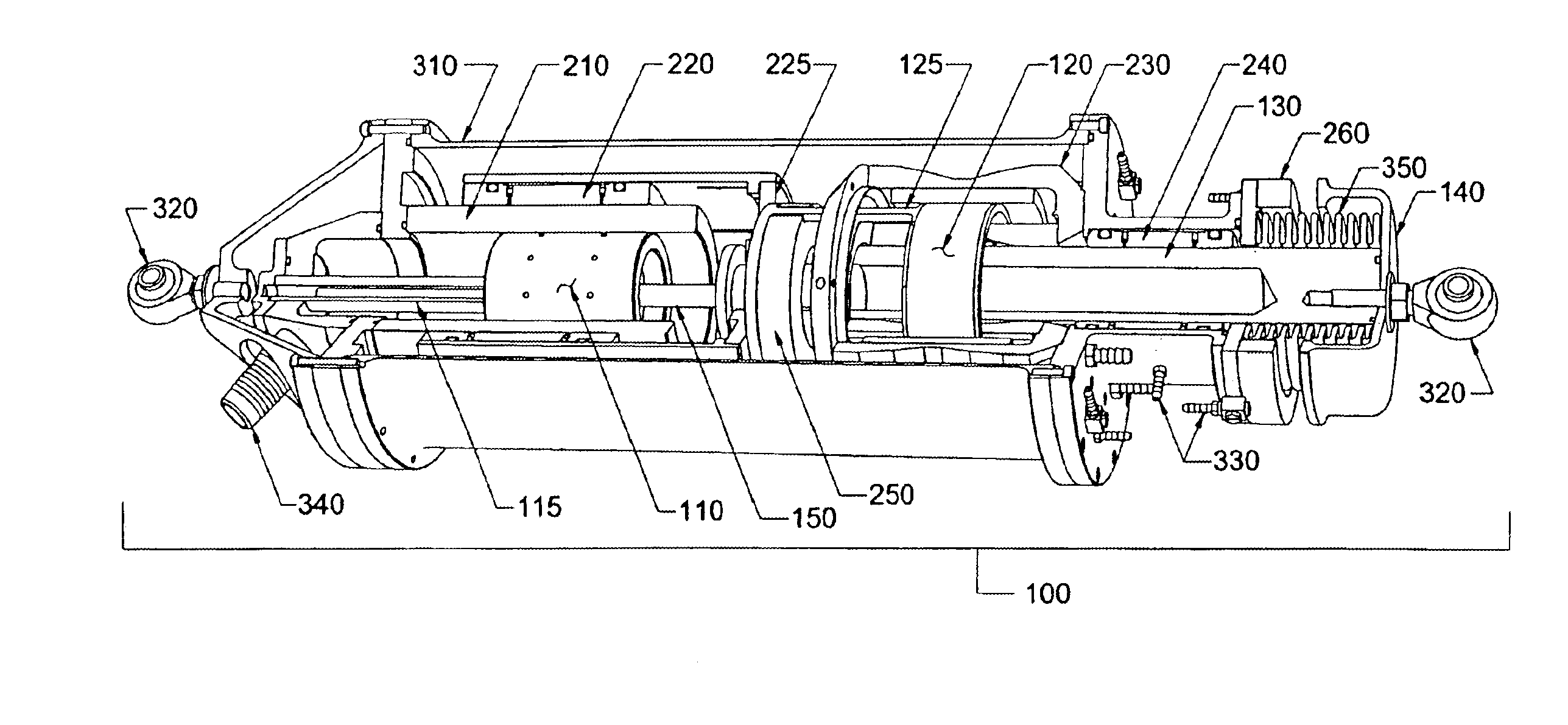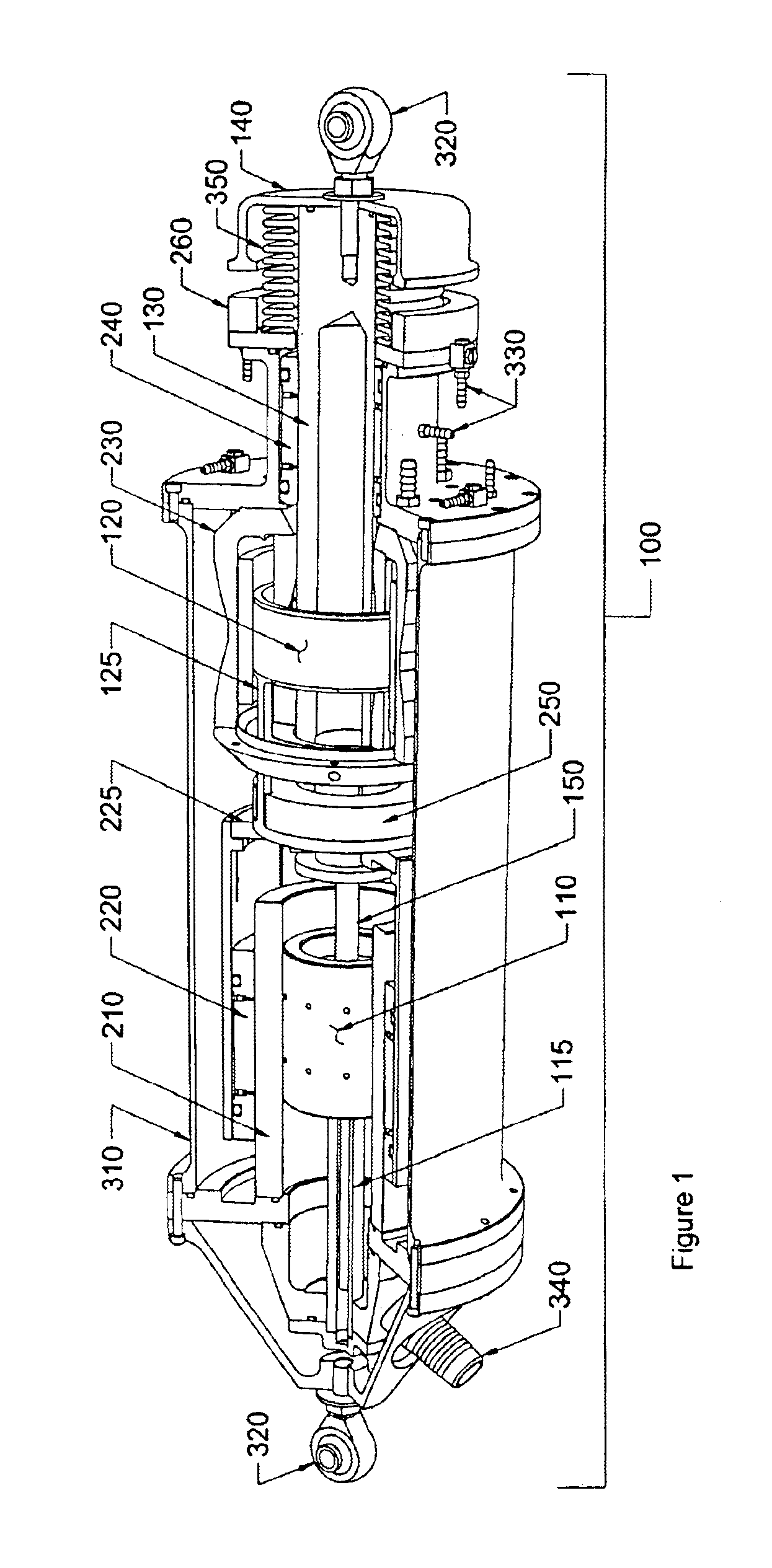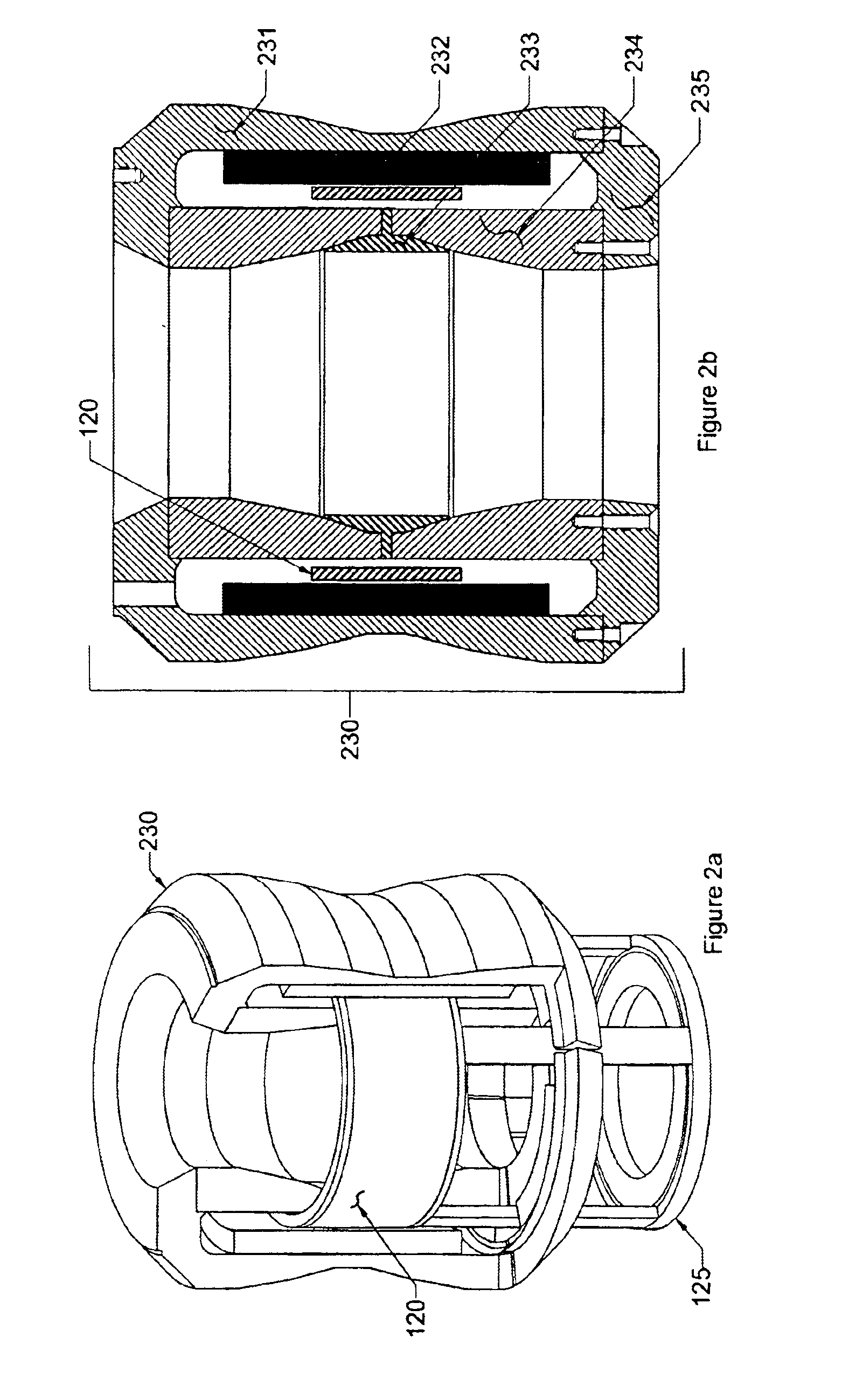Hybrid pneumatic-magnetic isolator-actuator
a hybrid, pneumatic-magnetic technology, applied in the direction of machine supports, shock absorbers, other domestic objects, etc., can solve the problems of not providing force or position control, affecting the function of payload, and actuators becoming stiff, so as to reduce the stiffness of air springs and reduce isolation break frequency , the effect of increasing the added volume of the air tank
- Summary
- Abstract
- Description
- Claims
- Application Information
AI Technical Summary
Benefits of technology
Problems solved by technology
Method used
Image
Examples
Embodiment Construction
[0040]Described in detail below is a compact and lightweight hybrid pneumatic-magnetic isolator-actuator. In the description, for purposes of explanation, numerous specific details are set forth in order to provide a thorough understanding of the present invention. It will be obvious, however, to one skilled in the art that the present invention may be practiced without these specific details. In other instances, well-known structures and devices are shown in simplified form in order to avoid obscuring the present invention. Additionally, though the embodiments described below refer to air as the gas used, any of various gases or combination of gases including nitrogen, argon, and helium could be used for effecting the isolation, pneumatic force, and coil cooling aspects of the invention.
[0041]FIG. 1 shows a preferred embodiment of the invention where a cut away view of a hybrid pneumatic-magnetic isolator-actuator 100 is depicted. Within the isolator-actuator a single moving carria...
PUM
 Login to View More
Login to View More Abstract
Description
Claims
Application Information
 Login to View More
Login to View More - R&D
- Intellectual Property
- Life Sciences
- Materials
- Tech Scout
- Unparalleled Data Quality
- Higher Quality Content
- 60% Fewer Hallucinations
Browse by: Latest US Patents, China's latest patents, Technical Efficacy Thesaurus, Application Domain, Technology Topic, Popular Technical Reports.
© 2025 PatSnap. All rights reserved.Legal|Privacy policy|Modern Slavery Act Transparency Statement|Sitemap|About US| Contact US: help@patsnap.com



